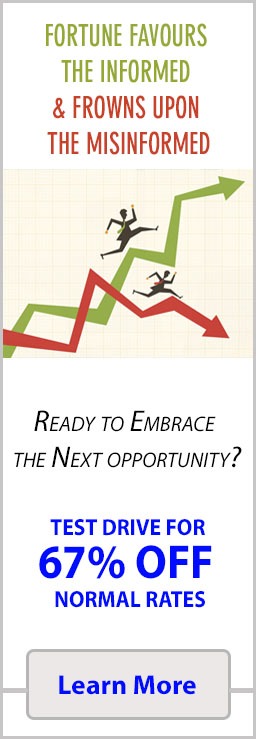
Emotional Reactivity: Fastest Path to Dumb Financial Decisions
Oct 8, 2025
Price dips 2% and hands fly. Stops blow, market orders fire, regret follows like weather. You tell yourself you were “being prudent.” You weren’t. You were flinching. Emotional Reactivity feels like action; it reads like care. In markets, it is a tax on nerves paid in USD and momentum. Trade like a donkey—emotional, jumpy, blind—and you lose like one. Every time.
I’ve watched accounts evaporate not because the tape was cruel, but because the trader was obedient to fear. Seneca would have called it an internal failure, not an external force. Montaigne would have spotted the ego—doing something, anything—to avoid looking foolish. Nietzsche would have named the will that didn’t show up. Robert Greene would have shrugged: mastery is emotion under control. The game isn’t bulls versus bears. It’s reflex versus rule.
What Emotional Reactivity Looks Like, Live
Panic selling after a routine pullback. Chasing green candles at the high, then “revenge trades” to get it back. Doubling size into uncertainty because red feels like insult. This isn’t temperament; it’s training gone wrong. Montaigne’s logic fits: action without clarity is ego protecting itself. The market doesn’t punish emotion; it punishes the absence of control over it.
Emotional Reactivity has a signature on the blotter: clustered entries around headlines, exits triggered by pain but never by plan, and a diary that reads like a courtroom defence after the fact. If your record needs a story to make sense, your process is already guilty.
Noise Wearing Signal’s Clothes
One tweet, a spike in the VIX, a rumour about a regulator—scramble. Volatility becomes the boss, reflection goes missing. The screen trains you to move at its pace, to think at its speed. Nietzsche’s correction is clean: strength is non‑reaction until a real signal appears. You don’t earn by twitching on command. You earn by acting when your map and the tape agree.
Ask the only question that matters: “What, exactly, would change my mind?” If you cannot answer in a sentence before you click, the click belongs to your nerves, not your rules. Emotional Reactivity loves questions you can’t resolve; it gets to drive while you narrate.
Movement pays dopamine in little coins. Stillness feels wrong, like laziness. Your biology rewards you for doing something now, even when the right thing is waiting. Seneca saw this centuries ago: we suffer more in imagination than reality. In markets, imagined future pain makes traders sell into temporary fear and buy into temporary relief.
Fatigue tightens the tunnel. A tired brain wants certainty and speed; it trades shallow stories for deep states. The invoice arrives in worse entries, tighter stops, and exits you can’t defend when calm. Emotional Reactivity feels like care; it behaves like a fine for impatience.
How the Market Exploits Your Weakness
Headlines are engineered to pull your gaze. Bots spike price around prints. Fake breakouts bait stops with surgical precision. The first fifteen minutes of the session show the widest spreads and thinnest depth; your fear in that window is someone else’s edge. Clusters of stops sit at round numbers because humans love symmetry; algos love humans for that.
Greene’s line belongs on a monitor: mastery is calm amid chaos. If your heart rate sets risk, the house doesn’t need to be smarter. It only needs you to keep reacting on schedule. Emotional Reactivity is predictable for those who harvest it.
Microstructure Traps: Where Reflexes Get Taxed
Opening auctions offer theatrics, not truth. Your market order at 09:31 hits slippage no statement will itemise. Stop hunts live around yesterday’s high/low and round figures; use staggered stops or stop‑limits to avoid being herded. News‑algo ramps can move price 1–2% in seconds, then reverse. If you must trade around news, shrink size and demand confirmations beyond the first minute.
The rule of thumb that saves accounts: when the tape shocks you, wait ninety seconds before any order. Ninety seconds is a lifetime in a panic, long enough for the limbic fire to dim and the frontal cortex to return. Emotional Reactivity hates clocks. Give it one.
Stop asking the feed for permission. Read states, not stories, with five dials you will actually act on. Breadth: advancers/decliners, up/down volume. Credit: high‑yield spreads and cash‑bond tone. USD and real yields: direction and pace. Volatility term structure: is the front still clenched or is calm returning? Leadership: who holds gains on red days.
Risk‑on is three days of spread compression, a softening dollar at the margin, a re‑steepening vol curve, and leaders breaking on volume with retests that hold. That buys the first third. Breadth thrusts unlock the second; earnings confirmation releases the third. Risk‑off is the mirror: widening spreads, firm USD, flat or frowning vol into strength, narrowing leadership. That trims, hedges, or halts. Emotional Reactivity can’t survive a dashboard that won’t move until states do.
Receipts: Where Flinches Paid the Bill
Volmageddon, 2018: XIV imploded as short‑vol tourists kept pressing because “it always bounces.” Freeze would have saved; flinch sent accounts to zero. March 2020: limit‑downs pre‑market, limit‑ups by the close. Panic sells at the open, then a V‑turn; rules beat adrenaline. 2022 CPI prints: headline algos whipsawed the S&P 500 by 3–6% intraday; impulse entries became meat for the grinder, while staged orders survived the churn.
In each case, Emotional Reactivity felt like competence. It wasn’t. The survivors shared boring traits: smaller size into uncertainty, time stops on theses, execution windows away from the open, and the humility to miss the first five per cent to avoid donating the next twenty.
Kill the Reflex: A Field Manual
Write a one‑page plan. Thesis in one sentence. Three disconfirmers you accept before entry. Exits by price and time—no mood edits. Every ticket carries a “why now” line; if you can’t write it cleanly, you don’t trade.
Set execution windows. Two 30‑minute blocks—mid‑morning and mid‑afternoon—when orders are allowed. All other hours are study or silence. Two‑click confirms add friction your future self will thank.
Cap the bleed. Max daily loss in USD; when tripped, stop. No bargaining. Single‑name risk 1–2%; theme risk 6–8%. Courage is small ego, not big size.
Stage entries in thirds. First on state confirmation, second after a clean pullback, third when earnings validate. Present beats perfect. If fear is loud, make it pay you: sell cash‑secured puts on fortress USA names during flushes, recycle a slice into 18–36 month calls to buy calendar. That’s humility expressed as structure.
90‑second freeze. After any shock, no orders until the clock dies. Breathe, read the five dials, then decide. If the urge is still urgent, it’s probably not a signal.
Autopsy: Shame the Impulse, Save the Account
After each trade, five lines. Trigger? State? Size? Exit plan? Emotion 1–5? Would you place it again, as written? If “no”, add one rule that would have blocked it. Retire one that no longer pays. This is how discipline compacts into habit: fewer repeat wounds, more repeatable wins.
Journals are not confessions. They’re black boxes. If your log doesn’t let an honest critic reconstruct your reasoning in two minutes, you don’t have a process. You have a story generator.
Emotional Reactivity isn’t a character flaw; it’s a body habit exploited by screens. Treat it physically. Move before the open. Hydrate. Eat on a schedule. These are not lifestyle tips; they are volatility dampeners for your nervous system. A calmer body widens the gap between urge and order where your rules can live.
Give your shadow a place to win that isn’t the bid. Personal records in the gym. Learning sprints. Clean streaks for journal completion. The urge for conquest will go somewhere—decide where before the bell decides for you.
The Cut That Matters
Emotional Reactivity is the default. Profit is the exception you build. Seneca’s calm, Montaigne’s honesty, Nietzsche’s restraint, Greene’s craft—none of it requires a monastery. It requires a timer, a dashboard, a max loss, and a refusal to trade your pulse. Replace the feed with five dials. Replace the flinch with a 90‑second freeze. Replace pride with staged entries and a “why now” line.
You can trade like a donkey, or like a sniper. One ends in pain and prose. The other ends in clarity, cash, and a diary so dull it could be a manual. Emotional Reactivity will always knock. Don’t open. Let the rule answer the door.












